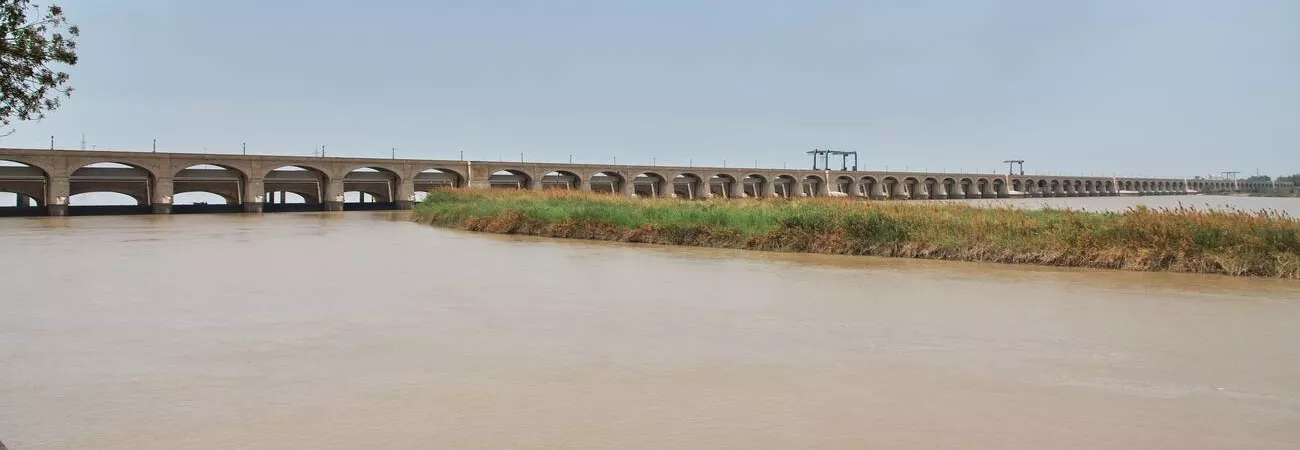i NEWS PAKISTAN
Sindh’s Dadu district continued to face the threat of widespread devastation on Saturday as a high-level flood passed through Sukkur Barrage and water levels persistently rose on Manchhar Lake. According to a Flood Forecasting Division report, a high-level flood of 559,988 cusecs was passing through Sukkur Barrage at 6am today. Dadu district has turned out the be the new epicentre of flooding as water flows towards the country’s south after wreaking havoc in the areas up north. Record monsoon rains and melting glaciers in northern mountains brought floods that have killed at least 1,265 people since June 14, with 57 casualties reported during the last 24 hours, according to the National Disaster Management Authority (NDMA). The total number of people who have suffered injuries stands at 12,577, the NDMA said.
On Friday, Dadu city, the capital of its namesake district, was surrounded by floodwaters — with an inundated Khairpur Nathan Shah city to the north; Manchhar Lake to the south; the Main Nara Valley (MNV) drain to the west; and the Indus to the east. In the Dadu district, several villages were under as much as 11 feet of water, according to Bashir Khan, a local resident who is in contact with people remaining in the area. “My house is underwater, I left my place four days ago with my family,” he told Reuters. In neighbouring Mehar, residents were building a dyke in an attempt to prevent floodwaters from entering the town, he said. Meanwhile, Kotri Barrage chief engineer had told Dawn on the phone that “we will be receiving a peak of high flood which passed by Sukkur Barrage on Aug 25”. At the time, he had appeared confident that river dykes in his territorial jurisdiction were safe and strong enough to withstand the flows. Sukkur Barrage had passed the first high flood peak of 579,753 cusecs on August 25 at 6am.
Separately, the water level in Manchhar lake was also on the rise, prompting Jamshoro Deputy Commissioner Fariduddin Mustafa to issue a flood alert. He said while speaking to reporters today that if the water level would rise further, residents from nearby localities could be evacuated. Sardar Sikandar Rahopoto, an MNA from Sehwan, told that the lake’s protective dykes were being monitored and relief efforts were underway. A day ago, the lake was receiving discharges from the Main Nara Valley Drain (MNVD), which is known as Right Bank Outfall Drain (RBOD-I). Breaches had been reported in MNVD, which had received hill torrents and caused breaches in the Flood Protective (FP) bund at multiple locations. Subsequently, the lake’s flows into the Indus River were measured at around 10,000 to 15,000 cusecs.“Now river Indus is not accepting huge flows as it is already having very heavy flows. Earlier, a flow of 30,000 cusecs was being easily released from the lake,” irrigation officer Mahesh Kumar had told Dawn from Manchhar Lake.
Credit: Independent News Pakistan-INP









